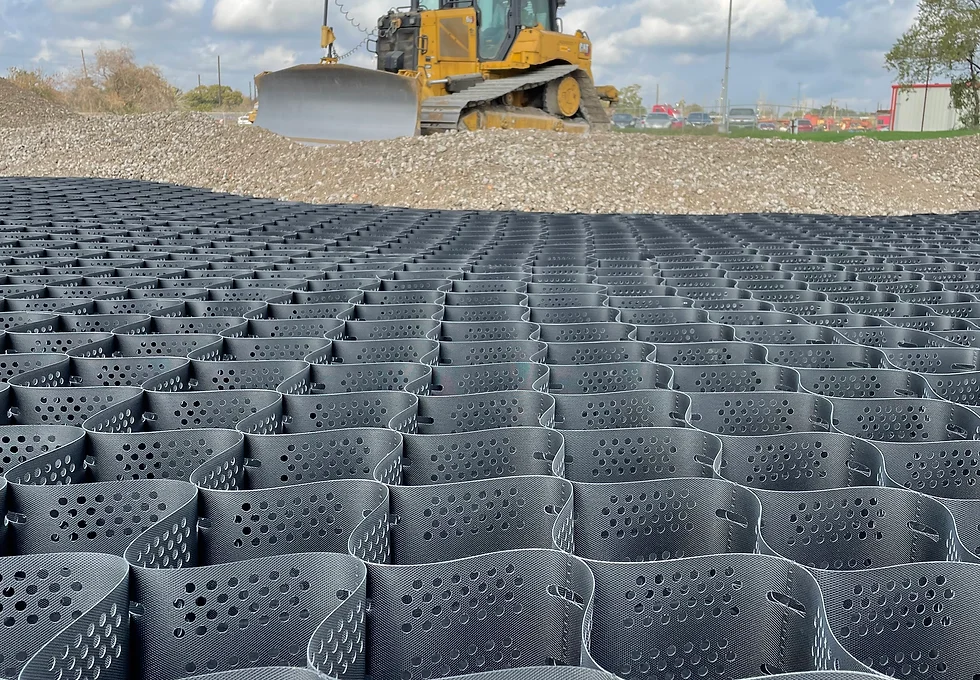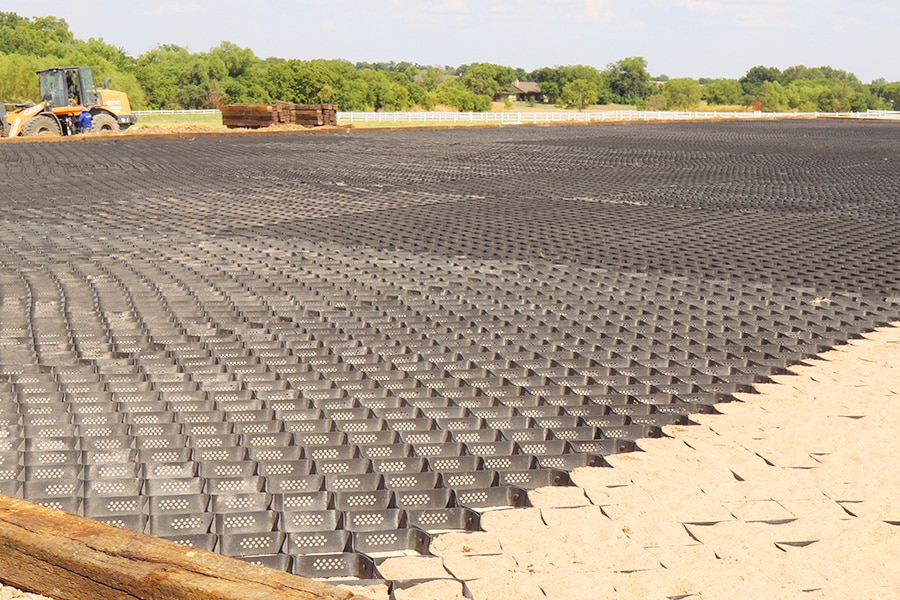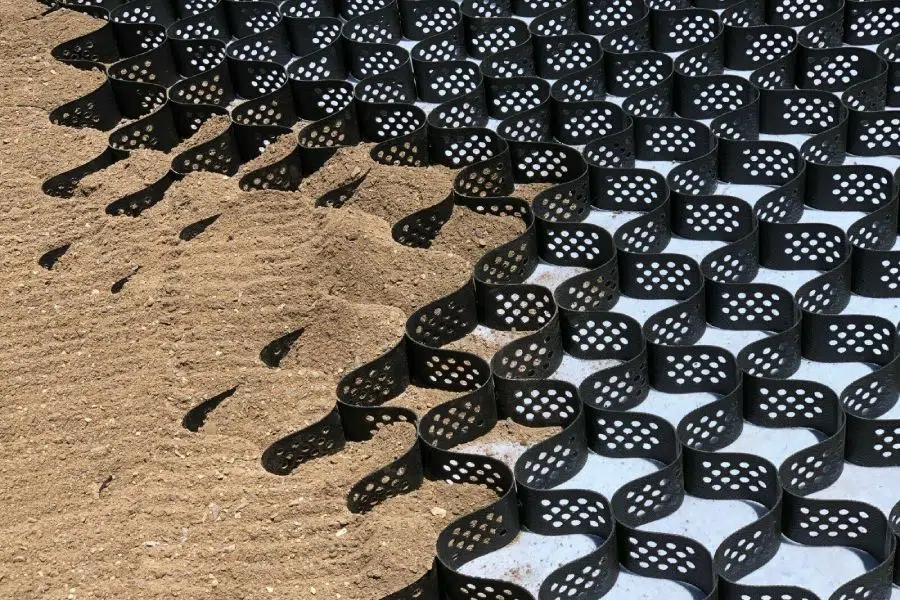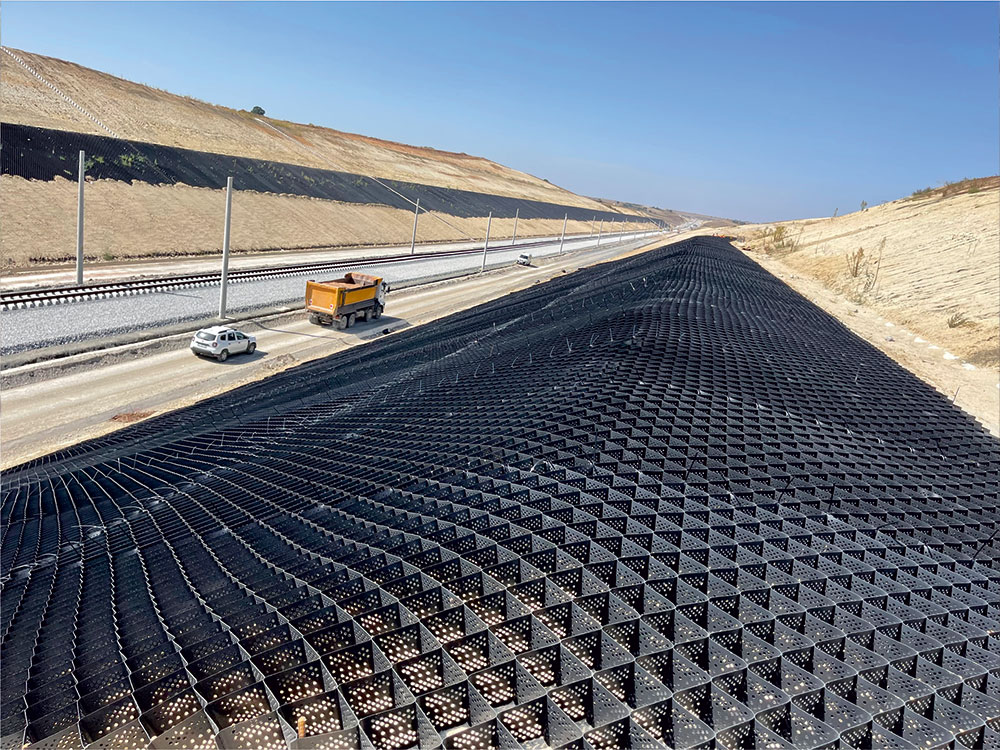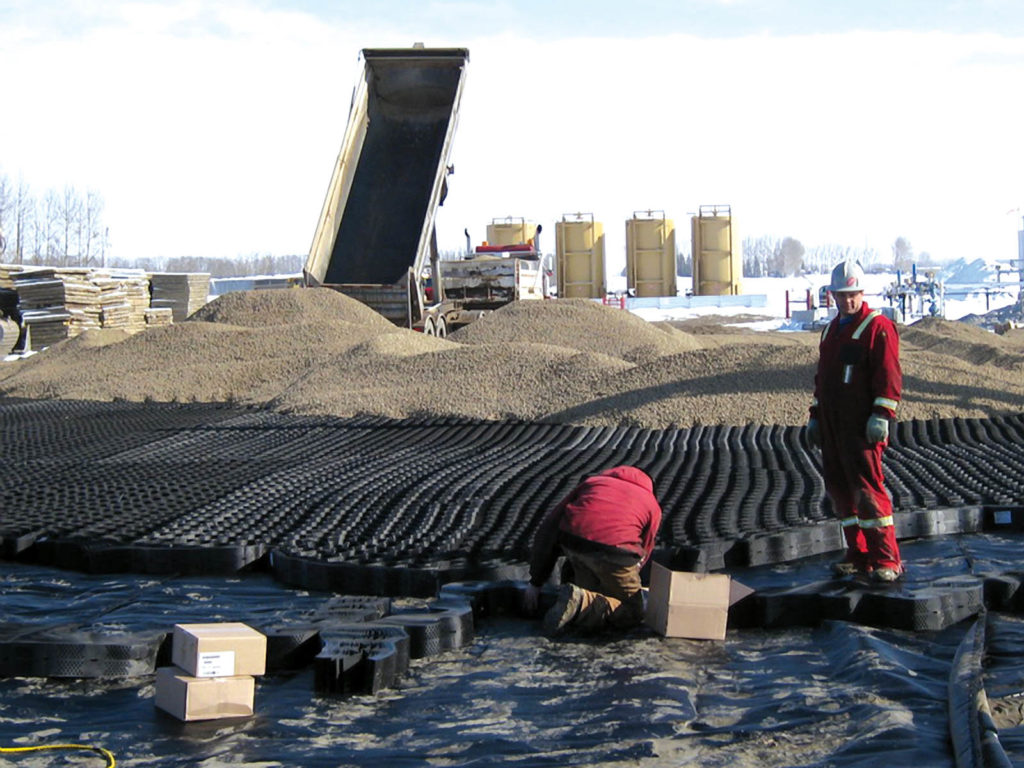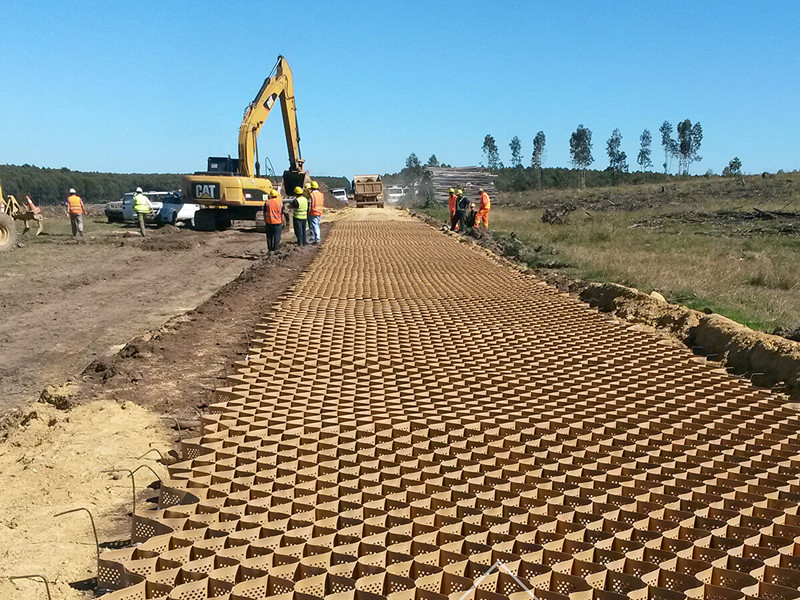[Summary description] Taishan Industrial Development Group – geocell features:
1. It can be flexibly expanded and collapsed during transportation. It can be stretched into a mesh during construction and filled with loose materials such as soil, gravel, concrete, etc., to form a strong structure. Structural body with lateral restraint and high stiffness.
2. The material is light, wear-resistant, stable in chemical properties, resistant to light and oxygen aging, acid and alkali resistant, suitable for different soils and deserts and other soil conditions.
3. High lateral restriction and anti-slip, anti-deformation, effectively enhance the bearing capacity of the subgrade and disperse the load.
4. Changing geocell height, welding distance and other geometric dimensions can meet different engineering needs.
5. Free expansion and contraction, small transportation volume; convenient connection and fast construction speed.
——————————————————————————————————————————————————————————————
Geocell Features:
1. It can be stretched freely, can be collapsed during transportation, and can be stretched into a net shape during construction, and filled with loose materials such as soil, gravel, concrete, etc., to form a structure with strong lateral restrictions and high rigidity.
2. The material is light, wear-resistant, stable in chemical properties, resistant to light and oxygen aging, acid and alkali resistant, suitable for different soils and deserts and other soil conditions.
3. High lateral restriction and anti-slip, anti-deformation, effectively enhance the bearing capacity of the subgrade and disperse the load.
4. Changing geocell height, welding distance and other geometric dimensions can meet different engineering needs.
5. Free expansion and contraction, small transportation volume; convenient connection and fast construction speed.
Engineering application of the cell room:
1. Dealing with half-filled and half-subgrade
When building an embankment on a slope with a natural slope of only 1:5, steps should be dug at the base of the embankment, and the width of the steps should not be less than 1M. When the road is built in stages or rebuilt and widened, the junction of the old and new subgrade fill slopes should be opened. For digging steps, the width of steps on high-grade highways is generally 2M. Geocells are laid on the level of each step, and the geocell’s own facade side-limited reinforcement effect is used to better solve the problem of uneven subsidence.
2. Subgrade in windy and sandy areas
The roadbed in windy sand area should be mainly low embankment, and the filling height is generally not less than 0.3M. Due to the professional requirements of low roadbed and heavy load in roadbed construction in windy sandy area, the use of geocells can play a lateral role in loose filling. The limited height ensures that the subgrade has high rigidity and strength to withstand the load stress of large vehicles.
3. Reinforcing soil filling for subgrade at the back of platform
The use of geocells can better achieve the purpose of abutment back reinforcement. The geocells and fillers can generate sufficient friction to effectively reduce the uneven settlement between the subgrade and the structure, and finally effectively alleviate the “abutment jump” The early impact damage of the bridge deck caused by “vehicle” disease.
4. Subgrade in permafrost areas
In the construction of filled subgrades in permafrost regions, the minimum filling height should be reached to prevent muddying or lowering of the upper limit of the frozen layer, resulting in excessive settlement of the embankment. The unique façade reinforcement effect of geocells and the overall confinement of effective implementation can ensure the minimum filling height in some special areas to the greatest extent, and make the filling have high-quality strength and stiffness.
5. Loess subsidence subgrade treatment
For highways and first-class highways passing through collapsible loess and loess sections with good compressibility, or when the allowable bearing capacity of the foundation of the high embankment is lower than the combined load of vehicles and the pressure of the embankment’s own weight, the subgrade should also be adjusted according to the bearing capacity requirements. At this time, the superiority of the geocell is undoubtedly revealed.
Geocell construction method:
1. Working face: some slopes have met the requirements, and the slope repairing construction is in progress, and the working face will be provided successively. The smoothness of the slope is related to the success or failure of the geocell grass planting protection. When the slope is uneven, the laying of geocells is prone to stress concentration, which will crack the solder joints of the cells and cause the cells to step on and so on. Therefore, the slope must be leveled to meet the design requirements, and the slope must be repaired manually to remove pumice and dangerous stones on the slope.
2. The side slope of the pavement cell should be equipped with a main drainage ditch system, with a distance of 4m between two adjacent ditches, and the drainage ditch is connected with the side ditch of the road, so that the road surface water flows into the drainage channel along the side ditch and enters the edge of the road , so as to avoid the accumulation of water on the road and prevent the slope protection from scouring the cells.
3. Carry out top leveling treatment on the slope surface, remove some sundries that are not conducive to the laying of the cells, and keep the slope surface flat and firm. You can also sprinkle a layer of high-quality soil first to facilitate plant growth.
4. The cell should be laid from top to bottom in the main direction of force, so that the cell sheet is perpendicular to the roadbed. Never lay horizontally.
5. Fully open the cell assembly, and nail a hook-shaped rivet pile into each cell on the top. The length of the rivet pile is required to be twice the height of the cell itself plus 30cm. For example, for a 5cm cell, its rivet pile should be 2× 5cm+30cm, 40cm in length, 10cm cell, its rivet pile should be 2×10+30, 50cm in length, and the rivet piles are nailed along the drainage ditch on both sides, bamboo and wood piles can be used, mainly to open the grid In the middle and bottom, bamboo and wood piles can also be used to stretch the cell. The top riveting piles mainly play the role of hanging and riveting the cell. Better materials, such as steel rods, should be used. The steel poles must be perpendicular to the slope, and the others mainly play the role of tension cells during construction, and the available materials are relatively simple.
6. After the cell is stretched and riveted, fill the cell space from top to bottom with high-quality soil suitable for planting turf or grass seeds. The filling should be 1.2 times the height of the cell, and it should be patted firmly and planted in time on the vegetation.
7. When used on the lower slope of the road, the drainage ditch should be connected with the road shoulder retaining ditch to facilitate the drainage of road area water without scouring the slope protection. When used on the upper slope of the road, a water blocking ditch should be set up on the top line of the upper slope. Make the accumulated water blocking ditch at the height of the upper slope flow into the drainage ditch to prevent the accumulated water from directly washing the slope protection. The upper slope should try to use a higher height geocell.
8. After the construction is completed, the re-inspection work should be done well, and the riveting piles that are not fully stretched and not strong should be reworked in time until the turf or grass seeds are completely alive.
Post time: Aug-28-2023


